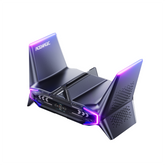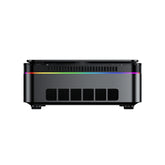How to Split Screen on Windows: A Step-by-Step Guide

Split screen on Windows allows users to view multiple applications side by side within the same display. The feature divides a monitor into two or more active zones so that different tasks can be performed simultaneously. This layout supports efficient multitasking on Windows, helping users organize work, compare data, or follow tutorials without switching between tabs.
Up next, we’ll explore the complete process of using split screen on Windows 10 and 11.
How to Split Screen on Windows 10 and 11 (Step-by-Step)
Windows provides several ways to split the screen, giving users flexibility in how they manage applications. The process differs slightly between Windows 10 and Windows 11, but the underlying concept — snapping and resizing windows — remains consistent. Below are clear instructions for each version, followed by shortcuts and customization options.
How to Split Screen on Windows 10 Using Drag-and-Drop
Windows 10 introduced Snap Assist, a feature that helps users align windows precisely. The most direct method uses the drag-and-drop gesture. Follow these steps:
- Open the first application window.
- Click and hold the title bar.
- Drag the window to either the left or right edge of the screen until a transparent outline appears.
- Release the mouse button. The window will automatically “snap” to occupy half of the display.
- The system will then show thumbnails of other open applications. Select one to fill the remaining half of the screen.
This method supports two-window layouts by default. To create more sections, you can resize windows manually by dragging the divider between them. Windows 10 adjusts their proportions dynamically as you move the border.
How to Split Screen on Windows 11 Using Snap Layouts
Windows 11 refined this process with Snap Layouts, making multitasking more structured and accessible. Instead of relying on edge snapping, users can select a layout directly from the interface.
Steps to use Snap Layouts:
- Hover your cursor over the maximize icon in the top-right corner of an open window.
-
A small panel will appear showing different layout options:
- Two equal halves
- Three-column layout
- Four-grid layout
- Click on the desired zone within the layout.
- Windows will automatically guide you to fill the remaining zones with other open apps using Snap Assist.
Snap Layouts are especially useful for large or ultrawide monitors, allowing balanced arrangements without manual resizing.
Using Keyboard Shortcuts to Split Screen
For users who prefer speed and precision, Windows keyboard shortcuts for split screen offer the fastest method. These commands trigger snapping actions instantly, avoiding the need for dragging or mouse input.
Shortcut for Two Windows Side-by-Side
- Win + Left Arrow: Snaps the active window to the left half.
- Win + Right Arrow: Snaps the active window to the right half.
Once a window snaps to one side, Windows automatically suggests available apps for the other half of the screen. Selecting one completes the two-window layout.
Shortcut for Four-Window Grid
For advanced multitasking, combine arrow keys vertically and horizontally:
| Layout Position | Shortcut |
| Top Left | Win + Left Arrow + Up Arrow |
| Top Right | Win + Right Arrow + Up Arrow |
| Bottom Left | Win + Left Arrow + Down Arrow |
| Bottom Right | Win + Right Arrow + Down Arrow |
These combinations divide the screen into quadrants, suitable for users who monitor multiple documents or data sets simultaneously.
How to Resize or Exit Split Screen Mode
Windows allows users to modify layouts anytime without restarting apps. To resize, move the cursor to the boundary between snapped windows. When the pointer changes to a double arrow, drag it left or right to adjust the size ratio.
To exit split screen mode, either drag a window’s border to the edge of the screen until it occupies the full area or press the maximize button in the window’s title bar.
This flexibility makes split screen mode practical for a range of tasks — from document comparison to real-time monitoring — while maintaining a clean, organized workspace.
Next, we’ll look at advanced split screen tricks and hidden features — including Snap Assist enhancements, system settings, and virtual desktops that extend multitasking beyond a single display.
Advanced Split Screen Tricks and Hidden Features
Once users are familiar with the basic split screen operations, Windows offers additional settings and tools that enhance control and flexibility. These advanced options refine how windows snap, align, and interact — allowing professionals and power users to build more efficient workflows.
Using Snap Assist to Organize Windows Efficiently
Snap Assist is the built-in feature that automatically suggests open applications when one window is snapped. It simplifies the process of filling the unused portion of the screen and keeps layouts tidy.
When Snap Assist is active:
- Snap one window to a side or corner.
- The system immediately displays thumbnails of other active windows.
- Click a thumbnail to snap it into the remaining available space.
This feature reduces manual window management and maintains alignment across multiple tasks. It’s particularly effective when handling several browser tabs, Excel files, or project dashboards at once.
To adjust how Snap Assist behaves:
- Open Settings → System → Multitasking.
- Enable or disable options such as “Show what I can snap next to a window” or “When I snap a window, automatically size it to fill available space.”
These settings define how aggressively Windows assists with layout placement and resizing.
Customizing Split Screen Behavior in Settings
Windows provides system-level controls to tailor split screen preferences. Users can adjust snapping behavior to match their workflow requirements.
To customize settings:
- Press Win + I to open Settings.
- Navigate to System → Multitasking.
-
Under the “Snap windows” section, review the available toggles:
- Snap windows automatically when dragging to screen edges.
- Suggest ways to fill remaining space.
- Resize adjacent snapped windows simultaneously.
Each option refines window alignment and response. For example, disabling simultaneous resizing lets users keep one window fixed while adjusting the other, which helps when referencing static information such as reports or metrics.
Setting Up Multiple Desktops for Cleaner Multitasking
In addition to Snap Layouts, Windows includes Task View, a feature that enables multiple virtual desktops. It extends multitasking beyond a single screen, giving users separate workspaces for different contexts — for instance, one desktop for meetings, another for editing, and a third for research.
To create or switch between desktops:
- Press Win + Tab to open Task View.
- Click New Desktop at the top of the interface.
- Move apps between desktops by dragging their thumbnails.
Each desktop can maintain its own split screen arrangement. This organization keeps workloads visually separate and prevents overlap between personal and professional applications.
Combining Snap Layouts with multiple desktops forms a powerful multitasking environment — structured, distraction-free, and optimized for continuous productivity.
Next, we’ll focus on troubleshooting — understanding why split screen might stop working and how to fix it effectively without reinstalling or resetting Windows.
How to Fix Split Screen Issues on Windows?
Occasionally, split screen features may not respond as expected. The problem usually comes from system settings, display drivers, or outdated builds of Windows. The following list outlines common causes and practical fixes to restore functionality quickly.
Common Reasons Why Split Screen Fails
- Snap Windows disabled in system settings.
- Display driver outdated or incompatible with the latest Windows version.
- Pending system updates affecting interface behavior.
- Application restrictions, where certain apps (especially games or legacy software) block window resizing.
- Corrupted user profile or temporary cache issues.
- Third-party software conflicts that override snapping functions.
How to Re-enable Snap Assist Manually
- Open Settings → System → Multitasking.
- Turn on the “Snap windows” switch.
- Check each sub-option under this section, including suggestions and resizing preferences.
- Close Settings and test snapping by dragging a window to the edge of the screen.
Update Drivers or Windows to Restore Split Screen
- Open Device Manager and expand the Display adapters section.
- Right-click the graphics card and select Update driver.
- Alternatively, go to Settings → Windows Update → Check for updates to install pending system patches.
- Restart your PC to apply changes.
These quick actions usually restore Snap Layouts and related multitasking features without deeper troubleshooting.
Tips to Boost Productivity with Split Screen
Split screen is more than a convenience feature — it can reshape how users manage daily workflows. The following tips outline practical ways to combine tools, displays, and layouts for maximum output and focus.
Combine Split Screen with Virtual Desktops
- Create multiple desktops using Win + Tab → New Desktop.
- Assign one desktop for communication tools and another for core tasks.
- Keep secondary apps (calendar, notes, chat) on a separate workspace to reduce distraction.
- Switch quickly with Ctrl + Win + Left/Right Arrow.
Conclusion
Mastering the split screen feature on your Windows device can significantly enhance productivity and create a more streamlined workflow. Whether you’re using Windows 10 or Windows 11, having the ability to work with multiple windows side by side gives you better control over your tasks and reduces unnecessary switching between applications.
By applying these split screen methods and optimizing your Windows environment, you’ll create a workspace that supports deeper concentration and smoother transitions between tasks. Embrace these tools, build your rhythm, and turn multitasking into an organized, productive habit.
FAQ
How do I split my screen into two Windows?
Open the first window, then drag it to the left or right edge of your screen until you see a transparent outline. Release the mouse, and the window will snap to that side. Windows will display thumbnails of your other open apps — click one to fill the other half of the screen.
What is the shortcut for split screen on Windows?
Press the Windows key and left/right arrow key at the same time to create a half-screen window. Press the Windows key and right/left arrow key at the same to restore the window back to its original position.
How do I split screen using a mouse?
Click and hold the window’s title bar, drag it to either the left or right edge of the screen, and release when a transparent guide appears. The window will automatically resize to fill half of the display. You can then select another window to occupy the other side.
Why isn’t split screen working on my computer?
Common reasons include disabled Snap Windows settings, outdated display drivers, or system updates pending installation. To fix this, go to Settings → System → Multitasking, enable Snap windows, and check for any available driver or system updates.
Can I customize how split screen works in Windows?
Yes. In Settings → System → Multitasking, you can fine-tune options such as automatic resizing, snap suggestions, and window alignment behavior. Windows 11 also adds Snap Layouts, letting you choose from multiple grid patterns for a tailored multitasking experience.






